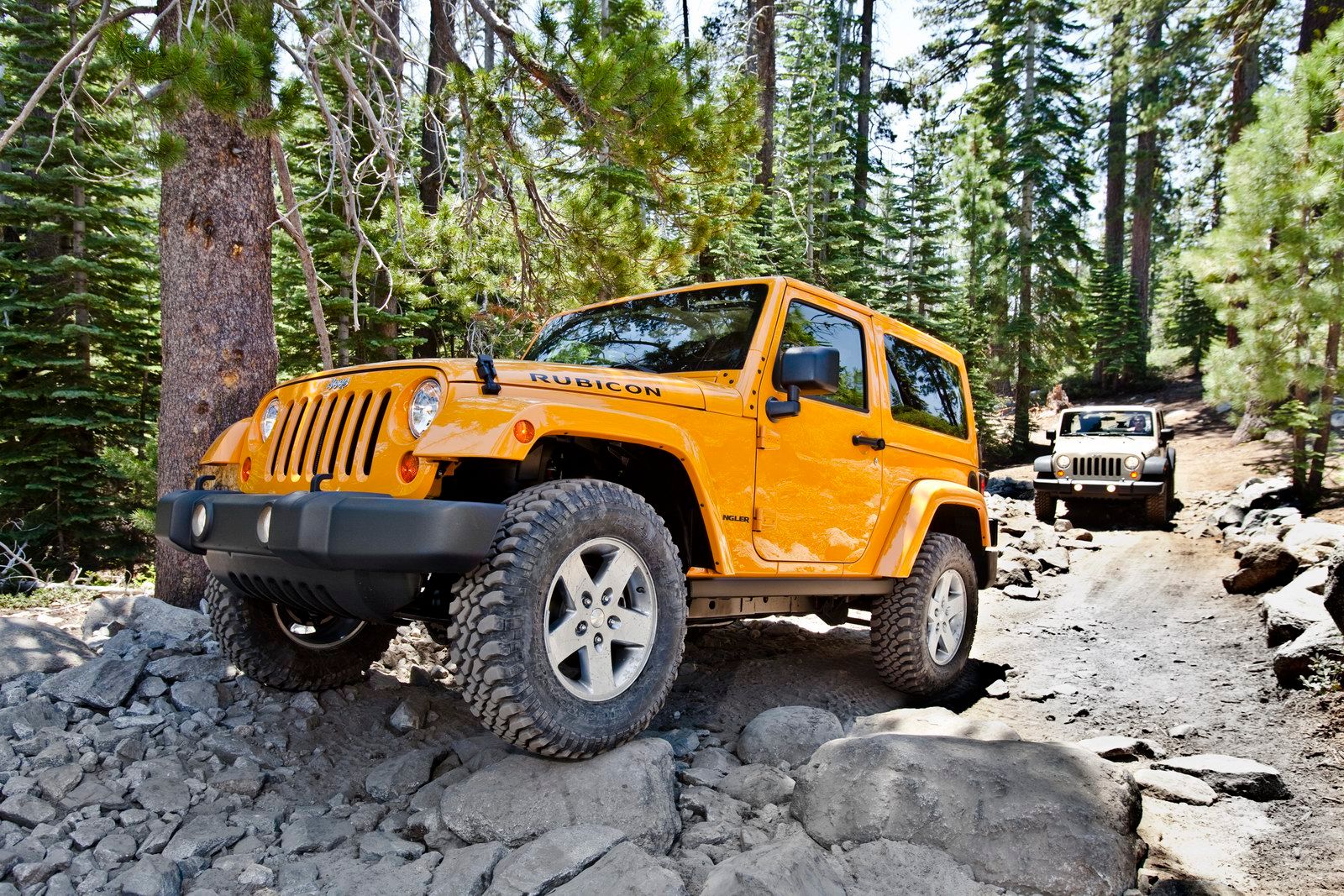Jeep Wrangler->ke425 fans can breath a collective sigh of relief as the next generation Wrangler is reportedly keeping its floating solid axle design despite the other major changes headed its way for 2017. Automotive News reports the iconic solid axle design was chosen over an independent suspension system, either by way of a front set up or at all four wheels. Though the news is unofficial, its validity is mostly unquestionable.
The next generation Wrangler is set for launch as a 2017 model and will adopt several weight-reducing parts and have a more aerodynamic design. The Jeep’s body will move to an all-aluminum construction, both saving weight an adding corrosion resistance, along with a more steeply raked windshield that decreases drag. Sadly, the windshield will be fix, losing the classic fold-down feature.
The Wrangler’s overall footprint is said to be smaller than the current Wrangler JK. How much so is still unknown, but a smaller size will be a welcomed attribute to hard-core off-roaders->ke4846 who need to squeeze between rocks and trees on tight trails.
We’ve also heard FCA CEO Sergio Marchionne say the next Wrangler will adopt a smaller, yet more powerful engine utilizing turbocharging. The engine will also be backed by the venerable ZF eight-speed automatic transmission. Expect Jeep->ke40 to still offer a manual transmission as well, though it will likely stick with six speeds.
Click past the jump to read more about the next generation Jeep Wrangler.
Why it matters
Solid axle suspensions are the standard for off-roading thanks to its ability to keep all four wheels on the ground over harsh terrain, its rugged construction, and its ability to be modified for a lifted ride height. This also means the huge number of aftermarket companies won’t have to adopt new suspension lift techniques, ultimately keeping costs down for the customer.
The next generation Wrangler’s reduced weight is also a positive thing, not only for fuel consumption, but also the vehicle’s ability to traverse deep mud and sand without sinking as much. It should also help its on-road drivability.
The smaller engine will most assuredly be lighter to help that cause, but will also displace less than 3.6 liters. The added turbocharger will likely mean an increase in power over the Pentastar, despite is smaller displacement. This also adds a new realm of modification for the aftermarket scene.
But perhaps the most interesting aspect of what Marchionne said about the engine is that the 3.0-liter EcoDiesel technically fits the description. (Though he never specifically mentions the V-6) Imagine getting 30+ mpg in a solid axle Wrangler with a smaller footprint more accustomed to tighter trails. Sounds like FCA is headed down the right path.
Jeep Wrangler
The current Jeep Wrangler JK is a hot-selling vehicle for those who love that rugged lifestyle. With a removable top and doors, along with that folding windshield, the Jeep really opens up for those off-road excursions. The JK has two engines in its history since its introduction in 2007, the old 3.8-liter V-6 and the much-improved 3.6-liter Pentastar V-6. A five-speed automatic or six-speed manual are the two transmission choices.
Prices for the Jeep Wrangler range from $22,795 for the base two-door model up to $40,000 for a top-trim Wrangler Unlimited.
Whatever the next generation Wrangler has in store, it will be a departure from the current JK, just as that Jeep was a departure from the hard-nosed TJ before it. Thankfully that doesn’t mean it will be accepted any less.

